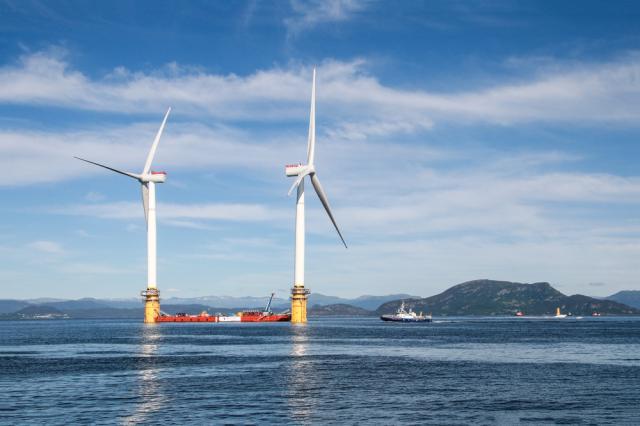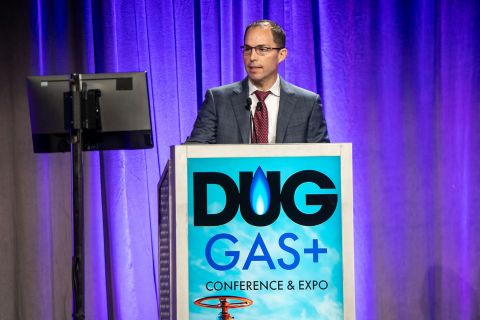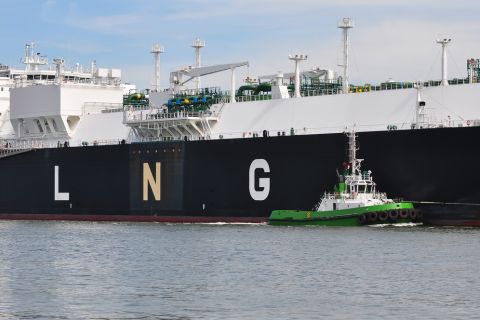
Offshore floating wind turbines in Norway. (Source: Shutterstock)
Learn more about Hart Energy Conferences
Get our latest conference schedules, updates and insights straight to your inbox.
Norway’s Equinor and Germany’s RWE signed a memorandum of understanding (MOU) Jan. 5 to develop a strategic energy partnership in Europe involving large-scale energy projects and boosted hydrogen production, the two companies announced in separate press releases.
The MOU details multiple decarbonization projects to bolster Europe’s energy transition and to lessen Germany and Norway’s carbon footprint.
As part of Germany’s transition away from coal, Equinor and RWE will jointly construct and own hydrogen-ready power plants run by natural gas. Their goal is to power them solely with hydrogen fuel once large-scale hydrogen production technology becomes available. These plants are based on technology meant to compensate for inconsistent electricity generated from renewables, according to RWE’s press release.
“Through this collaboration we will strengthen the long-term energy security for Europe’s leading industrial country while at the same time offer a viable route to a necessary energy transition for hard to abate industries. The collaboration has the potential to develop Norway into a key supplier of hydrogen to Germany and Europe. This is a unique opportunity to build a hydrogen industry in Norway where hydrogen also can be used as feedstock to domestic industries,” said Anders Opedal, Equinor CEO and president.
Equinor also plans to build facilities in Norway with an initial low-carbon hydrogen capacity of 2 gigawatts (GW) to produce low-carbon hydrogen from natural gas, said RWE.
More than 95% of the CO₂ produced will be captured and permanently stored offshore Norway under the seabed, according to Equinor.
The low-carbon hydrogen, also known as blue hydrogen, will be transported through a pipeline connecting the facilities in Norway to Germany, which RWE has agreed to purchase and use in hydrogen-ready gas plants, said RWE.
The two companies also plan to explore offshore wind energy opportunities in Norway and Germany, as well as other countries adjacent to the pipeline. Renewable, or green, hydrogen produced would eventually replace the pipeline’s low-carbon hydrogen.
“In order to make progress in the conversion from fossil fuels to hydrogen, there is an urgent need for a rapid ramp up of the hydrogen economy,” said RWE CEO Dr. Markus Krebber. “Blue hydrogen in large quantities can make a start, with subsequent conversion into green hydrogen supply. This is exactly what we are driving forward with our partnership – providing the industries with relevant quantities of hydrogen. In addition, our planned investments into hydrogen-ready gas-fired power plant will ensure security of supply in a decarbonized power sector.”
Recommended Reading
Report: Freeport LNG Hits Sixth Day of Dwindling Gas Consumption
2024-04-17 - With Freeport LNG operating at a fraction of its full capacity, natural gas futures have fallen following a short rally the week before.
Plus 16 Bcf/d: Power Hungry AI Chips to Amp US NatGas Draw
2024-04-09 - Top U.S. natural gas producers, including Chesapeake Energy and EQT Corp., anticipate up to 16 Bcf/d more U.S. demand for powering AI-chipped data centers in the coming half-dozen years.
US Drew New No. 3 Record 326 Bcf From Storage in Winter Storm Heather
2024-01-25 - The draw wiped out nearly all the year-over-year excess natural gas in storage, according to U.S. Energy Information Administration data.
US NatGas Futures Hit Over 2-week Low on Lower Demand View
2024-04-15 - U.S. natural gas futures fell about 2% to a more than two-week low on April 15, weighed down by lower demand forecasts for this week than previously expected.
Darbonne: Brownsville, We Have LNG Liftoff
2024-04-02 - The world’s attention is on the far south Texas Gulf Coast, watching Starship liftoffs while waiting for new and secure LNG supply.




